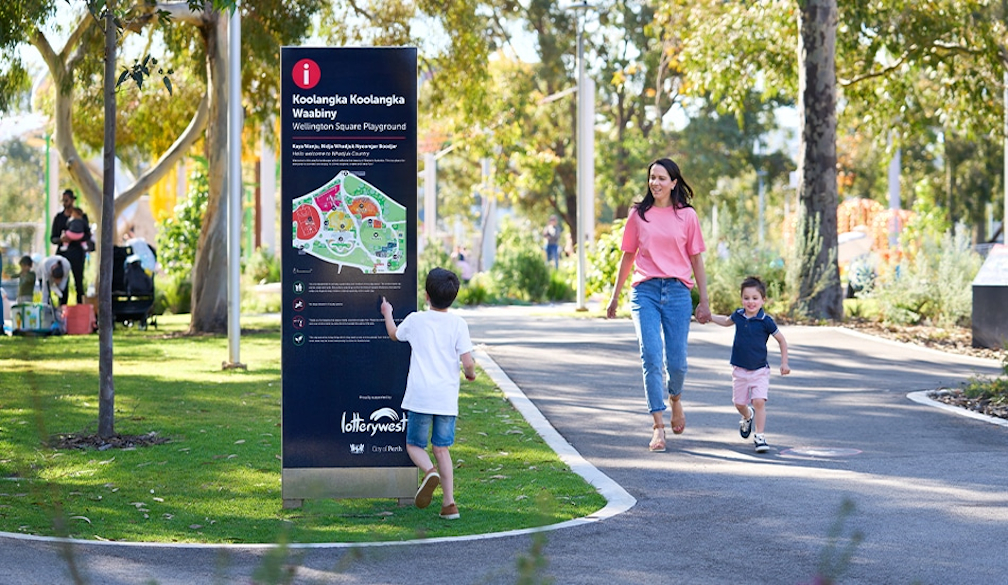The Importance of Wayfinding Signs in Public Spaces

Navigating through public areas is a fundamental activity that we all partake in, whether we're hurrying through airports, hospitals, or shopping centers. Wayfinding signs play a pivotal role in guiding us through these complex environments efficiently and safely. Not only do they point the direction, but they also enhance our overall experience in these spaces. The importance of clear and effective wayfinding signage cannot be overstressed, as it encompasses aspects of safety, accessibility, user experience, and even branding.
Importance of Wayfinding Signs
A. Enhancing User Experience
Efficient wayfinding signs significantly enhance the user experience, providing an intuitive guide through potentially confusing spaces. When visitors can find their way easily, the anxiety associated with getting lost is greatly reduced, leading to a more pleasant visit. A well-thought-out wayfinding system uses a combination of directional signs, maps, symbols, and digital tools to create a seamless navigational experience, thus empowering people to explore spaces without fear of losing their way.
B. Safety Aspects
Wayfinding signs also play a crucial role in ensuring public safety. In emergencies, marked exits, evacuation routes, and safety zones can mean the difference between calm and chaos. Signs need to be instantly recognizable and understandable to everyone, regardless of their first language or familiarity with the environment. This immediate comprehension can speed up evacuation times and reduce the likelihood of accidents during high stress situations.
C. Accessibility and Inclusion
Accessibility is another critical aspect that wayfinding signs address. Good signage ensures that all visitors, including those with disabilities, can navigate spaces independently. This involves the use of Braille for the visually impaired, high-contrast colors for those with vision limitations, and clear, simple language for easy comprehension for non-native speakers. By considering these elements, wayfinding signs not only comply with legal standards but also promote an inclusive atmosphere.
D. Aesthetic and Branding
The design of wayfinding signs can also significantly affect the aesthetic and branding of a space. Well-designed signs that align with the architectural elements and color scheme of their surroundings can enhance the visual appeal of a space. Furthermore, these signs can serve as an extension of a brand, conveying an organization’s values and identity consistently throughout its environment. This freestanding and affixed signage serves as an excellent example of how aesthetics can meet functionality to boost a brand’s presence.
Challenges in Wayfinding Sign Design
A. Balancing Information and Clarity
One of the biggest challenges in designing wayfinding signs is balancing the amount of information provided and maintaining clarity. Overly complicated signs can confuse and overwhelm the user, while too simplistic a sign can fail to provide the necessary direction. The key is to provide enough context to be helpful but not so much that it distracts from the primary message. This balance requires a deep understanding of design principles and user psychology.
B. Consideration for Diverse Users
Designing wayfinding signage that meets the needs of a diverse group of users is another significant challenge. Signs must be universally understandable, catering to individuals of different ages, cultures, and abilities. This inclusivity means selecting appropriate symbols, multilingual text where necessary, and considering cultural nuances that might influence sign interpretation.
C. Positioning Signs for Optimal Visibility and Effectiveness
The placement of wayfinding signs is as crucial as their design. Signs must be positioned at strategic points to catch the user’s attention at the right moment. They should be visible from a distance, unobstructed, and at an eye level that can be easily read by both children and adults. Indoor signs require different considerations than outdoor signs; lighting, wall colors, and other environmental factors must be taken into account to ensure signs are as effective as possible.
D. Material and Durability Considerations
The choice of materials for wayfinding signs affects not only their durability but also their functionality. Outdoor signs, for instance, need to withstand varying weather conditions, requiring robust materials like treated wood, metal, or high-grade plastics. Indoor signs might prioritize aesthetics more, but they still, need to be durable against wear and tear. The sustainability of materials can also reflect a brand’s commitment to environmental responsibility.
Conclusion
Wayfinding signs are integral to the functionality, safety, and aesthetic of public spaces. They guide, inform, and help secure a wide array of environments, from bustling airport terminals to serene hospital corridors. Addressing the challenges in wayfinding design, from balancing information load to ensuring durability, demands a meticulous approach that blends design expertise with an understanding of human behavior. As we continue to build more complex public spaces, the art and science of wayfinding sign design will remain a crucial topic for discussion and development, ensuring environments are accessible and welcoming to all.
